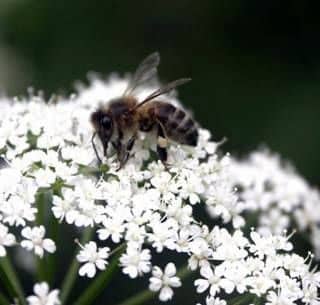
For normal development of bee species, the temperature in the hive is 34-35 њ. At a lower temperature, brood development slows down sometimes enough that 18 days are required for the exit of the uterus, bees for 23 days and drone for 26 days, and sometimes more. This happens in weak families, as well as in poor conditions of maintenance, for example, in case of insufficient warming of nests in spring and autumn.
With a significant drop in temperature, especially if the low temperature continues for a longer or shorter time, the brood may completely die.
Under good conditions for brood rearing, its development time is significantly (1-2 and sometimes 3 days) reduced.
A strong family can easily maintain the temperature necessary for brood, and therefore the development of brood in such a family is normal. In weak families, development slows down; The most sensitive to cold is the sealed brood. An open brood can take out a lower temperature longer, especially eggs. In view of this, printed brood should be more protected from low temperature when inspecting hives than honeycombs with eggs or larvae.
In order to keep the bees warmer in spring and autumn, it is necessary to have: strong families, warm hives without any cracks, a nest commensurate to the strength of the family, upper and side warming of the bees and good supply of families with fodder.
The size of the cells influences the development of brood. Trutnevye cells, that is, those in which drones are derived, more bees. If, under abnormal circumstances, drones are brought up in bee cells, such drones are much smaller than ordinary drones, since they could not develop normally in small cells.
Studies show that if the bee brood is fed in broader and larger (“enlarged”) cells, then the resulting bees will also be somewhat larger than the ordinary ones.
The size of the cells in the nest of the same bee family does not remain constant. The cells of the newly built honeycomb are wider than the cells of the same honeycomb in which the brood was excreted. The reason for this is as follows.
Upon the release of young bees, other bees are immediately taken for cleaning the released cells. They remove only a part of the cocoon threads that are at the edges of the cell, gnaw the skin from the last molt, smooth and polish the cell walls, but do not touch the lining (the remains of the cocoon, etc.) on the bottom of the cell and the larvae of the larvae located under the lining. In the prepared cells the uterus again begins to lay eggs. With each release of a new generation, an increasingly thick layer of stool larvae and the remains of their skins accumulate at the bottom of the cells. On the walls, too, there are shells. As a result, the internal volume of the cells decreases. In addition, hexagonal cells become cylindrical and dark. Bees raised in very old bee cells, whose inner volume has decreased, are somewhat smaller, and have less developed wings than bees,
On the “old age” honeycomb can be judged by its color. Fresh honeycomb is white and yellow and quite fragile. But after each release of the brood it becomes darker and darker and finally becomes completely black, which in the hives should not be tolerated. The queen cells, that is, the cells in which the uterus is excreted, are not cleaned out, but by the exit of the uterus, they are beaten by bees. For the normal development of brood, it is necessary that the bee family has sufficient supplies of feed, and fresh noodles (nectar and pollen) enter the nest.
The need for a bee family in the stern is great. Especially a large number of it is needed in the summer, when there is a lot of brood in the hive. In the winter months (months of rest) in the conditions of Ukraine, a bee family weighing 2 kg during normal wintering consumes an average of only 4-6 kg of honey.
The amount of honey and pollen required for a bee family in the summer is quite large. Experiments and observations indicate that approximately 100-130 g of honey and 120-150 g of perga are spent on the upbringing of 1000 bee-larvae.
The upbringing of the drones with a round bill requires 5 times more food than a bee. Most authors believe that the family of bees consumes, for a year, brood rearing and feeding the entire family, 90-100 kg of honey and 25-30 kg of peppermint.
Сроки медосбора. Подсадка матки в клеточке.
Biology of the bee family